As many of you may know, Microsoft released the latest version of the Windows operating system last July. Unlike previous releases of Windows, Microsoft has made Windows 10 a free upgrade for current Windows 7/8/8.1 users for the first year. You may already be familiar with the Windows 10 upgrade prompts that have been appearing on systems over the past year, which allowed you to upgrade when and if you choose to. Having this option allowed you to be fully prepared for the upgrade and to check with your CAD/CAM system support teams to make sure yours systems were supported on Windows 10. However, the window of opportunity for the free upgrade is rapidly closing. Because of this, Microsoft has made a change to the upgrade protocol to get as many users on Windows 10 as possible.
Prior to the change in update protocol, the Windows 10 upgrade app would appear in the optional Windows update category. Now, Microsoft has changed the update to be included alongside other recommended updates. If your system is setup to automatically install important and recommended updates, you will be automatically upgraded to Windows 10 within the next few weeks. For most Windows users, upgrading to 10 isn’t an issue, but in the case of our dental CAD/CAM systems there are a few matters to consider beforehand. The main consideration for a dental lab is whether your CAD/CAM software is supported on Windows 10. In most cases, if you are on the latest versions of your CAD/CAM software then you can safely upgrade to Windows 10. However, if for some reason you are staying on a version from mid-2015 or earlier, you will more than likely run into some compatibility issues. If your system hasn’t already upgraded, and you can’t or don’t want to upgrade to the version of your CAD/CAM software that is supported on Windows 10, then follow the below steps to prevent your system from automatically upgrading itself.
- Press the Windows key on your keyboard. The key looks like the Windows logo and is located between the left Ctrl and left Alt keys. This will open the Start menu on your PC.
- Type “Windows Update” in the search bar of the Start menu window and press Enter. This should open the Windows Update section of the Control Panel.

- Click on the “Change settings” option on the left side of the Windows Update panel. You should see a window that looks similar to this.
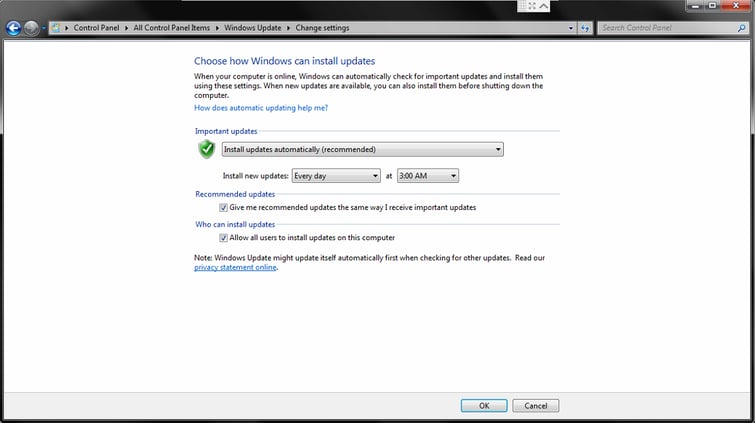
- To disable the automatic Windows 10 upgrade, you need to change the update installation option under “Important Updates” to an option that lets you choose whether you want to install updates like, “Check for updates but let me choose whether to download and install them.”
- Click “OK” to save the changes you’ve made to the update settings and close the Windows Update window. Now that you’ve changed the update settings you can cancel the Windows 10 upgrade rather than just rescheduling it. NOTE: Once you’ve made this change you will need to regularly check Windows Updates for important/recommended updates for your system.
- You should see a Windows logo icon in your task bar at the bottom right of the screen
 . Click this button to bring up the Get Windows 10 app. You should see something like the Window below. NOTE: If you selected the option “Download updates but let me choose whether to install them" in step 4 you may not see the line, “Click here to change upgrade schedule or cancel scheduled upgrade” until the Windows 10 update has been downloaded to your system.
. Click this button to bring up the Get Windows 10 app. You should see something like the Window below. NOTE: If you selected the option “Download updates but let me choose whether to install them" in step 4 you may not see the line, “Click here to change upgrade schedule or cancel scheduled upgrade” until the Windows 10 update has been downloaded to your system.
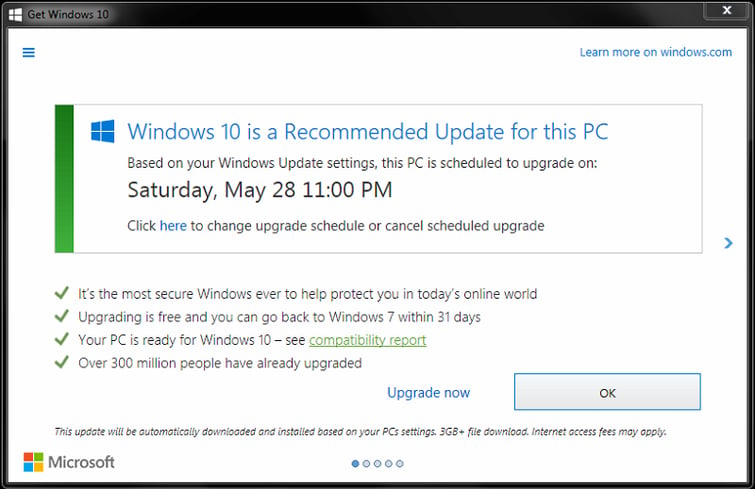
- Click on the word “here” in the sentence about scheduling your upgrade. You’ll get a window like the one below.
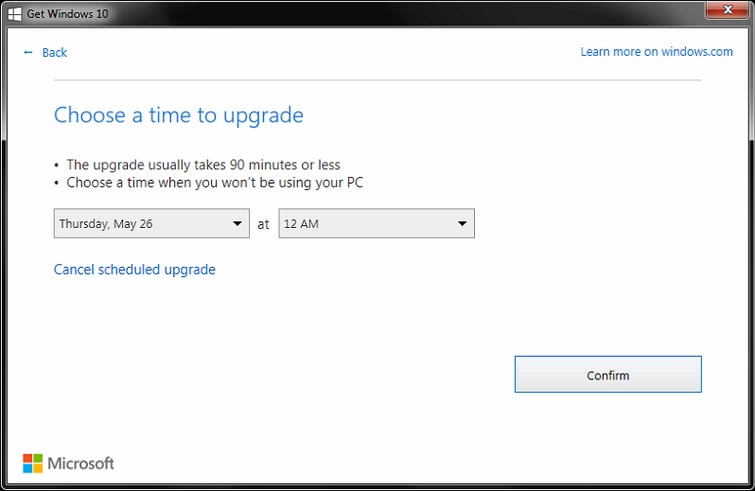
- Click on “Cancel scheduled upgrade.”
- On the next window click the “Cancel scheduled upgrade” button.
- This will close the Get Windows 10 app but you will still see the icon in your task bar. If you open the app again you should see something similar to the picture below.
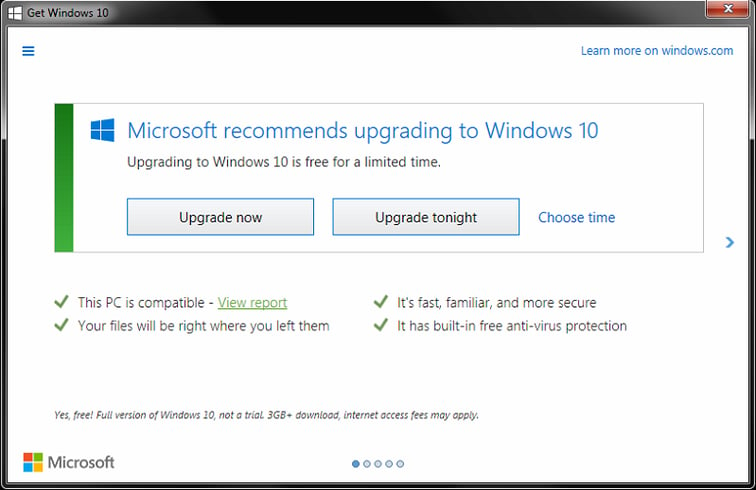
- Now the app is set to wait for you to choose to upgrade.
Although we recommend being on the latest versions of your CAD/CAM software for several reasons, it is up to you to decide whether these versions are best for your daily workflow. Windows 10 is a great operating system and I personally recommend upgrading while it’s free, but if you don’t want to upgrade or can’t due to compatibility issues with your dental software then please follow the above steps to cancel the Windows 10 upgrade before it automatically updates your system. Doing so will potentially save you a lot of headache down the road.








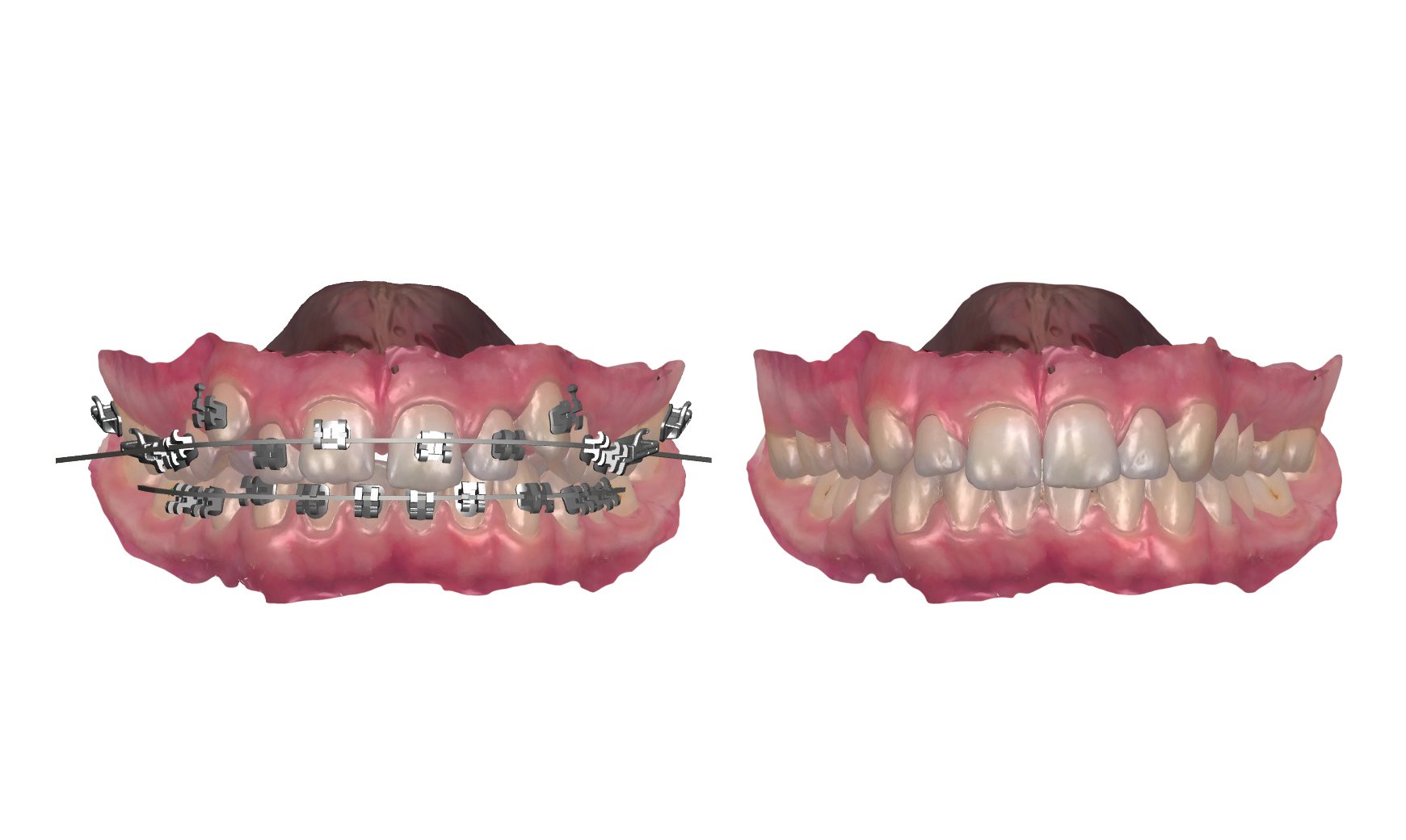



Leave a comment